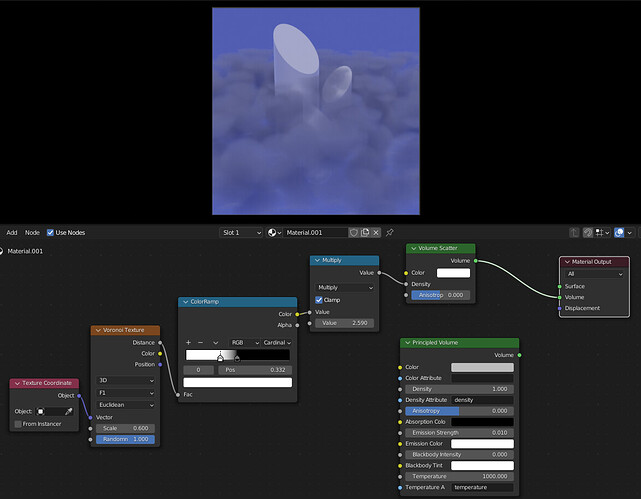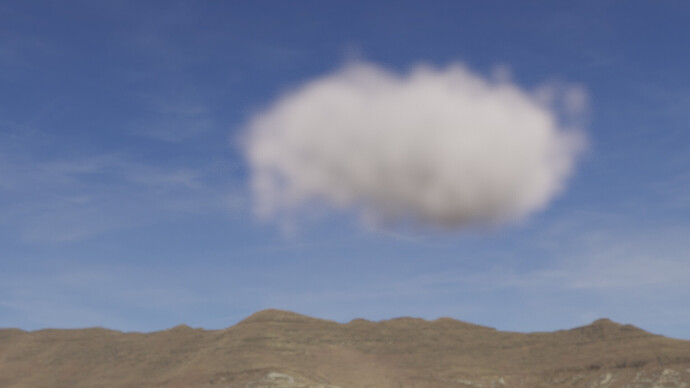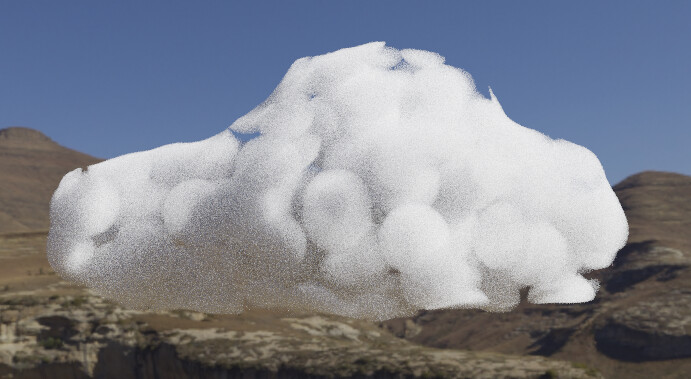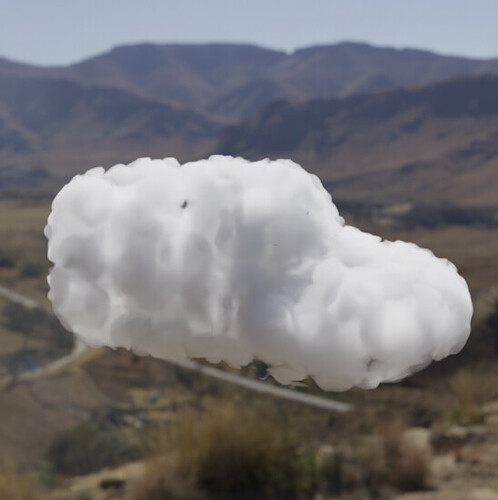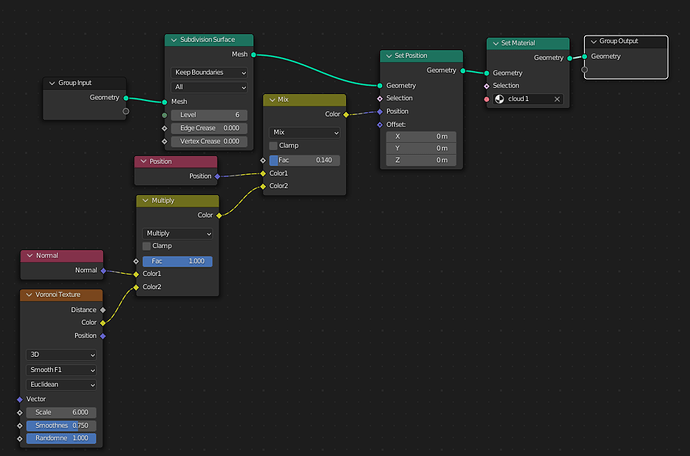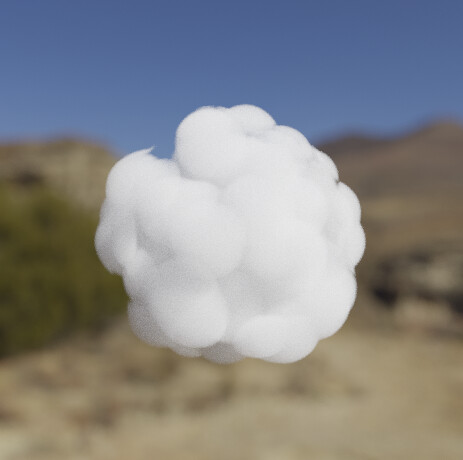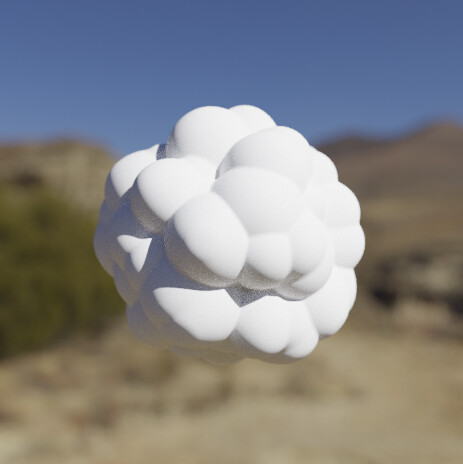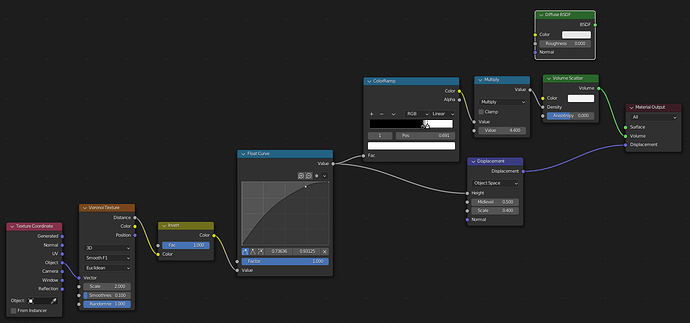I’m satisfied with the shape of the clouds but I’d like them to be white without having to use an emission shader.
If you use the Principled Volume shader, you can add a little bit of Emission (use Shift while dragging to adjust it in small increments). Volume scatter can’t be white without some Emission, I know you don’t want it but there’s no physically based way to do it without, and I don’t think there’s any “Volume to RGB” type thing you could use to alter the color.
One hacky type thing you could try that probably won’t work is plugging a Color that’s brighter than white into the Color of your Volume Scatter. Try a Combine XYZ node, with all three values set to 10, and see if that does anything or if it’s clamped
are you implying the white clouds in the sky are somehow “glowing”?
that makes the “empty” areas between the cloud puffs also glow while the cloud puffs remain quite dark
Increase volume steps.
Yeah… light reflects off of water in clouds, clouds in reality are in fact emissive. If you’ve ever been in a place with snow on the ground, you can see a marked difference between clear nights and cloudy nights. Cloudy nights are a lot lighter.
While clouds are reflective, they are not emissive.
hmmm… putting a point light near the clouds is working… but not with the sun light… unless I drastically increase the strength of the sun…
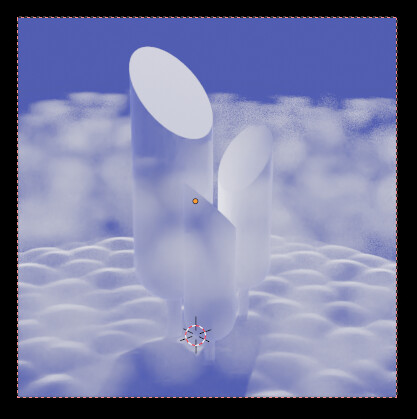
According to NASA, clouds are both emissive and reflective:
Now if only I could synchronize the voronoi texture used in geometry nodes, with the voronoi texture used in the volume I’d be able to get puff circles of clouds above the top of the volume cube instead of looking like a truncated boolean.
Emissive in the IR range doesn’t matter too much in terms of visual impact.
I think it’s just a matter of lighting,… use real world values for your light intensity and check that you’re using a sensible working color space (filmic may give you overblown clouds with real light intensity).
@joseph I think what they’re talking about over at the (very informative) link you posted is ultimately energy that was created by fusion in the sun (anyway) then reflected off Earth’s surface. So as long as OP models a ground to give off this additional energy (which they seem to have done), it’s going to be there in the render. There’s always some energy loss in light transport but not enough to compensate for with emission, I think the adjustements should come from the light really.
I don’t think that’s accurate
With proper density, and enough bounces, you should be able to get that puffy white look.
Yeah if both you and SterlingRoth think I’m wrong, I’m wrong for sure ![]() I’m realizing I need to do more research on clouds
I’m realizing I need to do more research on clouds
Up the number of volumetric bounces in the render panel. The way volumetric materials look depends massively on the number of volumetric bounces set - especially if using volumetric scatter.
This is 1 bounce (blender default I think)

This is 32 bounces (full GI setting)
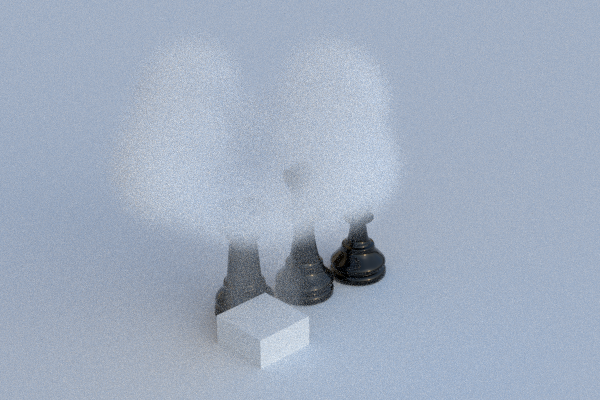
Material and lighting settings are the same.
Yes, that did the trick. Now I just need to get the actual silhouette of the cloud to match the vibe of the internal volume.
hmm… the mesh to volume node in geometry nodes does not take field inputs so I cannot use the voronoi texture to define the density like I can with shader nodes, and applying my cloud material from earlier does not have any effect.

Perhaps try upping the scattering anisotropy a bit (say 0.25) This will give you nice ‘silver linings’ when viewing the cloud with the sun behind it.
